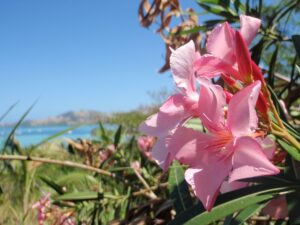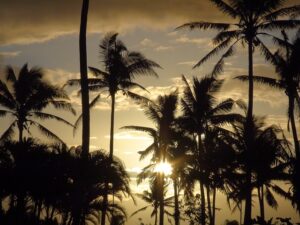Fiji is an archipelago of 333 islands consisting of a population of over 850,000. The island’s waters have abundant, stunning coral reefs and marine life, surrounded on land by lush flora and fauna, making Fiji one the most sensational destinations tourists will ever see.
Over the past 25 years, Fiji’s tourism industry has been transformed by government directives and entrepreneurs who carefully boosted the infrastructure and image of the islands to currently rival any global destination.
A relatively short time ago Fiji was considered a backpacker’s destination, it gradually catered family holidays to Fiji and Fiji weddings. Now scuba diving in Fiji is on most serious diver’s bucket list.
Prominent Ecotourism and Diving Locations in Fiji
You are spoilt for choice! Below are noteworthy locations in Fiji for diving enthusiasts and divers:
- Mamanuca Islands
- Viti-Levu
- Abaca Village and Recreation
- Momi Bay Battery Historic Park
- Nukubolu- Stepping back in time
- Bouma National Heritage Park
- Orchid Island
- Colo-i-Suva Forest Park
- Raintree Lodge
- Fiji Kayak Kadavu
- The Fiji Museum
- Sigatoka Sand Dunes
- Koroyanitu National Heritage Park
- Taveuni Hill Fort
- Kula Eco-Park Fiji
- Taveuni Island
- Castaway Island (made famous by Tom Hanks)
Infrastructure was something that had let the island down in the past for the mid to higher-end holidaymaker, being considered more of a backpacking destination.
However, with the introduction of high-end hotels, eco-resorts, coupled with the ability to have an authentic Fiji wedding, and Fiji honeymoon, the country now caters to everyone’s needs.
Careful conservation of their coral reefs has steadily taken professional and casual divers away from its neighbours, scuba diving in Fiji has never been so popular.
Now the global surfing community considers Cloudbreak in the Mamanucas to be one of the top five beaches worldwide for surfing. In recent years Cloudbreak has become home to some of the world’s largest and most challenging waves, hosting a number of top competitions during the season.
It was during the 1990s the government decided not just to boost tourism in Fiji, but to turn Fiji into the world’s number one ecotourism destination and provide well-needed jobs for Fiji’s indigenous community to participate and benefit from the industry.
The United Nations Food and Agricultural Organization (UNFAO) acknowledged the Fijian government saw the opportunity to create jobs, higher income and entrepreneurial opportunities for the local population while ensuring it was a catalyst to help the preserve Fijian culture and their natural environment. A move not adopted in many countries where tourism has sadly been detrimental to the ecological systems of many popular destinations around the world.
Fijian Ecotourism Attractions

The government’s desire to offer a unique and inspiring insight into their culture, (the opposite to all-inclusive package holidays to Fiji with major hotel Chains) offers visitors a diverse range of travel experiences throughout the islands.
It is still possible to find untouched rain forest on islands throughout Fiji and this lends itself to many ecotourism attractions within the country that ensures they are preserved for future generations to enjoy and benefit from.
Many of the eco-tourist attractions are run by local Fijians so visitors have the chance for not just a cultural visit but an educational one too.
The Yasawa Island chain refused land-based tourism for many years to ensure the natural habitat was kept in-tact.
The island resorts tend to now be made by local people as well and come with the acceptance or blessing from the local head of the village, therefore are staffed by locals, in-turn benefitting the community, thus creating more of a relationship with the tourists than in more commercial global tourist hotspots but still providing comfort and more than adequate facilities.
Education enabling the creation of eco-tourism was central to the government’s plan and has enabled the islands to stay free from modern society to a large extent. There are no fast-food restaurants or factories on any of the islands and even paved roads on many. So sustainability is assured and your tour operator will arrange boat trips to the islands.
Making it Sustainable
 Fijians have no interest in a corporate spin about a lack of evidence regarding climate change, it has had noticeable effects on the South Pacific Islands everywhere over the past 30 years. All Fijians will tell you it’s now challenging to predict the seasons, and the tides are higher than they’ve been in generations, they know the effects first-hand.
Fijians have no interest in a corporate spin about a lack of evidence regarding climate change, it has had noticeable effects on the South Pacific Islands everywhere over the past 30 years. All Fijians will tell you it’s now challenging to predict the seasons, and the tides are higher than they’ve been in generations, they know the effects first-hand.
So it is also the responsibility of the visitors to understand how precious these islands are and ensure they practice sustainable tourism, treat the environment with the respect it is due and the communities they visit.
The basic government guidelines are:
- Minimise the environmental impact
- Teach environmental and cultural awareness
- Deliver positive experiences for both visitors and hosts
- Provide direct financial benefits for local people and conservation
- Ongoing international human rights and labour agreements support
Another prime example is Tavarua Island in the Mamanucas stretch of Islands who work closely with the Fijian Department of Fisheries to ensure the giant clam species survives as it was recently on the endangered list. The fisheries received over 500 baby clams, whereby they have worked on ensuring the marine environment will help the reproductive process thrive in the reef and the wild.
It was the local villages who now endorse and welcome eco-tourism who helped to establish their own fishing restrictions and implement them effectively due to the new income streams available to them. In just one generation they have gone from poachers to conservationists, and eco-warriors, a remarkable turn-around in such a relatively short period of time.
On land, much work has been put into breeding and stopping habitat loss for endangered species such as the Hawksbill sea turtle, Fijian iguanas, and snakes. This work is carried out between volunteers and locals in conjunction with the National Trust for Fiji in the Kulu Wild Adventure Park where they have a breeding facility for indigenous and endangered species.
There are multiple schemes around a vast amount of the islands working with Mamanuca Environment Society to ensure the protection of the marine and territory resources.
So when booking package holidays to Fiji, Fiji honeymoon packages or just looking for cheap Fiji vacations please make sure that your tour operator can show you that they are affiliated with eco-principals, especially when diving in Fiji, they must use a dive operator that ensures protection of the reefs.
Conclusion
While the main focus of eco-tourism is undoubtedly reducing human impact on both marine life and natural environments, we must not forget ethical tourism is focused on preserving and enhancing communities and local economies around the world, regardless of the location.
When you go to Fiji be sure to embrace it and look to try to stay at locally owned hotels or guesthouse, shop for stores that employ local workers and sell locally produced goods.
With the environmental impact that is being seen is some of the world’s most famous tourist spots, Fiji has become a global model showing that it’s never too late to change or to implement a different way of thinking that benefits all.

